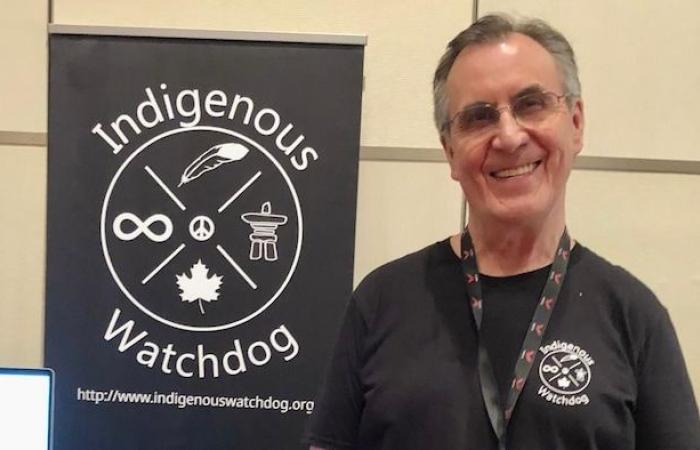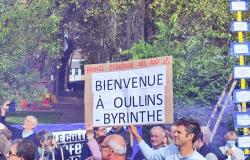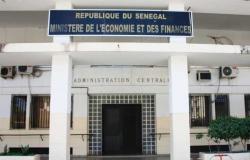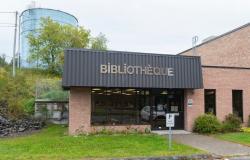
The majority of the 94 calls to action launched by the Truth and Reconciliation Commission (TRC) to address the legacy of residential schools and advance the reconciliation process are far from being achieved. What is the situation, nine years after the submission of the TRC report? On this National Day for Truth and Reconciliation, Indigenous Spaces takes stock based on the website of the non-profit organization Indigenous Watchdog.
Douglas Sinclair, who launched the site Indigenous Watchdogis categorical. The balance sheet is terrible
. The fact that the government has not done more is a real black mark for me.
he explains.
Start of widget. Skip the widget?End of widget. Return to start of widget?
Progress is so timid and Canada so slow that the Institute Yellowheadan Indigenous-led think tank, decided last December to stop publishing an annual report on progress.
The non-profit organization Indigenous Watchdog has decided to continue to monitor progress and actions monthly with the main question: Is reconciliation progressing? If not, why?
. Launched in 2020, after three years of development, it is based on multiple sources such as government stakeholders, the media, research reports and even statistics.
According to Douglas Sinclair, there are four reasons for the poor implementation of calls to action. First, the lack of political will to address issues related to land and self-determination.
Second, structural problems in governance systems, legislation and institutions that obstruct legislation. Then, systemic racism still anchored in justice in health and child protection, he believes. Finally, the lack of data or access to data.
Open in full screen mode
A member of Manitoba’s Peguis First Nation, Douglas Sinclair began following what was happening regarding calls for action right after the Truth and Reconciliation Commission report was tabled.
Photo: Courtesy: Douglas Sinclair
Implementation of calls to action may be a cross-functional responsibility, or only of the federal government, provincial and territorial governments, or of individual stakeholders such as law schools, nursing schools, social work, teaching or even churches.
The objective ofIndigenous Watchdog is to look holistically at what each stakeholder is doing or not doing and hold them to account. It’s a daily job, seven days a week.
Indigenous Spaces used this organization to summarize progress – or not – in the six major themes into which the 94 calls to action contained in the Final Report of the CVR.
This year, a call to action was made, says Douglas Sinclair. Sanctioned on 1is Last May, the Act providing for the establishment of a national reconciliation council will lead to the creation of an independent non-profit organization of national scope with 9 to 13 members, at least two-thirds of whom will be indigenous. Nevertheless, it took almost nine years to put it in place. And the Council is still not officially operational and not doing its job
specifies Douglas Sinclair.
Child protection
Start of widget. Skip the widget?End of widget. Return to start of widget?
This is undoubtedly the big issue of the year with the unanimous decision rendered in February by the Supreme Court allowing Indigenous communities to move forward in the management and administration of child protection, but also the announcement in July of an agreement between Ottawa and the Assembly of First Nations worth $47.8 billion over 10 years to reform the indigenous youth protection system. This is more than two and a half times what the government initially announced for this reform in 2022.
Given the overrepresentation of Indigenous children in child welfare, changes to the system are the highest priority in this file’s calls to action.
If you or someone you know is experiencing residential school-related trauma, you can call the National Residential Schools Crisis Line toll-free at 1-866-925-4419. This service is offered 24 hours a day.
It is also possible to call the Hope Helpline at any time by telephone at the toll-free number 1-855-242-3310 or by chat at hopepourlemieuxetre.ca.
Indeed, according to Statistics Canada, Indigenous children are still significantly over-represented among children in foster families in Canada. In 2021, Indigenous children made up 7.7% of all children under the age of 15 in the general population, but 53.8% of children in foster care. In 2011, they represented 47.8%.
Of five calls, only the one concerning the publication of annual reports on child protection, indigenous and non-indigenous, has not been started. The others are underway, but at different paces and calls to order regularly make the news. For example, Ottawa and First Nations have just been invited by the Canadian Human Rights Tribunal to work together on Jordan’s Principle.
Education
Start of widget. Skip the widget?End of widget. Return to start of widget?
None of the eleven calls to action regarding education are being implemented. The picture is not very rosy since the majority of them are stagnating or have not started. In 2016, a report from the Office of the Parliamentary Budget Officer confirmed the blatant underfunding of schools in Indigenous communities, and even that it was growing. In 2019, Ottawa promised to better fund First Nations education. Gold, Indigenous Watchdog believes that the bill on indigenous education with the participation of indigenous peoples has not been started and that the elimination of gaps in the financing of education for First Nations living in and outside communities is on hold.
Language and culture
Start of widget. Skip the widget?End of widget. Return to start of widget?
More than 70 indigenous languages are spoken in Canada. Although most have seen declines, some have experienced great revitalization and an increase in the number of their speakers. According to the 2021 Canadian Census, just over 237,000 Indigenous people reported being able to speak an Indigenous language well enough to hold a conversation. However, for the first time since this type of data has been compiled, this figure is decreasing.
Efforts to implement the five calls for action regarding this sector are bearing fruit with two of the five being achieved. In 2021, for example, Ottawa appointed Canada’s first-ever Indigenous Languages Commissioner. Two are on pause, notably because of the provinces and not Ottawa. While some provinces agree to allow residential school survivors to reclaim their names, others still refuse. In Quebec, Richard Kistabish, a member of the Abitibiwinni First Nation, has been trying for more than three years to have the Quebec civil registry accept his real birth name, which he lost as a child when he arrived at a residential school for Indigenous people.
Health
Start of widget. Skip the widget?End of widget. Return to start of widget?
The health file is progressing slowly with five of the seven calls to action currently being implemented, in particular those to respond to the specific needs of Aboriginal people who do not live in communities, to ensure continued funding for Aboriginal healing centers and hire more indigenous health workers. But the project is vast, the problems and delays (particularly accumulated in financing) are great. Several gestures and initiatives are seen as the beginning of healing. Just a start. On September 18, the Canadian Medical Association issued a live apology to Indigenous peoples, an apology loaded with truth for some.
In the 2024-2025 federal budget, Ottawa plans to invest $1.06 billion in health; this is the biggest envelope. According to Indigenous Watchdogthe recognition and implementation of the rights of indigenous peoples in matters of health care is blocked, in particular because of the refusal to recognize the existence of systemic racism by certain provinces. This has an impact on other projects and laws, particularly in cultural security.
Justice
Start of widget. Skip the widget?End of widget. Return to start of widget?
One of 21 calls to action on justice has been completed in nine years. This is the independent national inquiry into missing and murdered indigenous women and girls, which reported in 2019. Although technically comprehensive, this call to action remains linked to calls made by theENFFADA. However, only two of the more than 150 calls to action intended for First Nations people have been carried out since 2019, according to the Assembly of First Nations (APN) who also castigated all levels of government at the beginning of June for what she calls the slow progress aimed at putting an end to the crisis.
Four calls are blocked according to the Indigenous Watchdog organization, and five have not started, but 11 are in progress. The latter concern everything from financing to the modification of the criminal code, including the training of lawyers and the offer of culturally adapted services to prisoners.
Reconciliation
Start of widget. Skip the widget?End of widget. Return to start of widget?
The CVR issued 45 calls to action regarding reconciliation. Nearly a quarter have been completed. Last year, the Vatican rejected the “doctrine of discovery,” a request frequently submitted by Canada’s Indigenous people to the Catholic Church and one of the Church’s calls to action. CVR. On the other hand, among those which have not been started, we find the sub-file on the Royal Proclamation and Pact of Reconciliation, which includes three calls to action. Nearly another quarter of them are in progress. On June 21, 2021, the United Nations Declaration on the Rights of Indigenous Peoples in Canada Act came into force, but its implementation by the federal government is limited to areas of jurisdiction and the involvement of the provinces. This call to action is therefore still ongoing.
Generations…
Douglas Sinclair is more angry than discouraged by the record of implementing the calls to action. If the courts are more in tune, according to him, with the rights of indigenous peoples and there is encouragement from this point, he notes that the negative aspects always prevail.
Fully honoring calls to action is a generations-old issue. Unfortunately, this is something that will drag on forever. Governments simply don’t have the impetus or will to really tackle things head on
he explains.
He understands that governments face many problems, such as the housing crisis, climate change, the economy, the cost of living. But Indigenous issues have been pervasive for 157 years
he recalls.
It is therefore important to have this mechanism (for monitoring calls to action). This is essential for holding stakeholders accountable
concludes Douglas Sinclair.
Our colleagues at CBC launched the website Beyond 94 (New window) which also tracks calls to action. Their general conclusions resemble those ofIndigenous Watchdog, but they do not ventilate in the same way.





